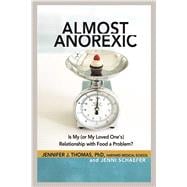Determine if your eating behaviors are a problem, develop strategies to change unhealthy patterns, and learn when and how to get professional help when needed with this practical, engaging guide to taking care of yourself when you are not a full-blown anorexic.
Millions of men and women struggle with disordered eating. Some stand at the mirror wondering how they can face the day when they look so fat. Others binge, purge, or exercise compulsively. Many skip meals, go on diet after diet, or cut out entire food groups. Still, they are never thin enough.
While only 1 in 200 adults will struggle with full-blown anorexia nervosa, at least 1 in 20 (including 1 in 10 teen girls) will exhibit key symptoms of one or more of the officially recognized DSM eating disorders--anorexia nervosa, bulimia nervosa, and binge eating disorder. Many suffer from the effects but never address the issue because they don't fully meet the diagnostic criteria. If this is the case for you, then you may be "almost anorexic." Drawing on case studies and the latest research, Almost Anorexic combines a psychologist's clinical experience with a patient's personal recovery story to help readers understand and overcome almost anorexia.
Almost Anorexic will give you the skills to: understand the symptoms of almost anorexic; determine if your (or your loved one's) relationship with food is a problem; gain insight on how to intervene with a loved one; discover scientifically proven strategies to change unhealthy eating patterns; and learn when and how to get professional help when it's needed.








